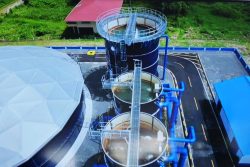Dear Editor,
I would like to respond to a letter by the Hon. Minister of Finance, entitled `Guyana is increasingly seen as a stable, well-managed country with bright prospects for sustainable development’, published in the October 9, 2018 edition of SN. The letter, inter alia, sought to pin the current mediocre economic performance to the past regime.
In doing so, I will address some of the statements by the author.
• Non-performing loans (NPL) increased to 13.2%
Indeed NPL increased significantly from 2014 to 2017. In fact, during the 3-year period, average non-performing loans increased from 7% to 13.2%. Specifically, NPL in the business enterprise and household sector increased by more than 58% or $7.1 billion, and 65% or $3.1 billion, respectively. In the commercial banking sector, return on equity for the six major commercial banks fell from an average of 22.3% in 2014 to 2.9% in 2017. The cause, clearly is attributed to reduced disposable income, as consumption falls due to higher taxes. Thus, from 2014 to 2017, aggregate private consumption contracted by more than $196 billion. Within the first year in office, economic uncertainty coupled with the introduction of a slew of incoherent policies led to a dip in private consumption by more than $79 billion. Compounding this outcome, in 2016, the government introduced more than 200 new tax measures on ordinary Guyanese including VAT on electricity and water. In response, private consumption contracted by another $85 billion. According to the latest confirmed actual figure of private consumption, as of 2017, the level is still below 2014 actuals by more than $32 billion. What this tells us is that, on average, from 2014-2017, each household in Guyana has cut back on spending by more than $1.1 million or $30,500 monthly. Given the dismissal of over 7,000 sugar workers, 2,000 Amerindian CSOs, and a number of public servants, the $30,500 per month becomes more of a conservative estimate.
On the investment side, credit to central government, within 2014-2018, increased by more than 242%, while the private sector saw a mere 11.3% growth. Moreover, in 2017, lending to the manufacturing sector contracted by more than $4.2 billion or 14.6%, when compared to 2015. In mid 2018 the decline gathered momentum and the manufacturing sector, once again, contracted by another 5.7% to $26.0 billion. Specifically, credit to the beverages, food and tobacco industry, and for other construction and engineering decreased by $2.6 billion (39 %) and $1.8 billion (15 %), respectively. The decline, however, is of grave economic concern. It confirms the fact that Guyana is about to embark on a path of premature deindustrialization, an economic phenomenon which exposes the core of the economy to exogenous shocks. Exacerbating this outcome, is the combination of the resource windfall into the formula. A feeble manufacturing sector has proven to be the principal cause of the “resource curse”.
• Debt to GDP ratio is well
To a certain point this might be true, and the PPP/C government must be credited for salvaging one of the most indebted and poorest countries in the world when it took over the reins of the economy, in 1992. The then government was able to reduce a debt-to-GDP ratio from 600% to one of the lowest in the Caribbean, just around 50% by 2014. To date, however, the government seems to have rekindled its infatuation with public debt. In 2018, the debt to GDP ratio is expected to increase to 54.2%. During the second half of the year, the country has witnessed an increase in both foreign and domestic debts. Recently, the government signed a US$36.4M loan agreement with China, following by another US$20M with the Islamic Development Bank. Domestically, taxpayers have become the buttress of a $30 billion syndicated bond for GUYSUCO, which to date, authorities have failed to justify the real purpose. The impact, thus far, has been an increase in debt service payment in 2017 by more than 70% or US$35.3 million, to US$85.3 million, when compared to 2014.
• Government has reduced the Value Added Tax (VAT) from 16% to 14%
Indeed, however, revenue collection by central government has increased by more than $47 billion, and is projected to increase by another $10 billion by the end of 2018. On a per capita basis, from 2014-2017, each Guyanese has paid an additional $63,500 in tax. The cause is directly linked to broadening of the tax base. Given the strong elasticity of demand for the majority of the goods that now attract VAT, tax revenue would undoubtedly increase. Hence, overall the effective tax rate increased by more than 7%.
• Central government deficit hailed a success
Wrong! The deficit in the Central Government increased from $9.3B in 2015 to $34B or 277% by end 2017 and is expected to increase by another $9B by end 2018, to $43 billion. Moreover, public enterprises moved from producing a surplus of $8B in 2015, to a deficit of $12.8B at the end of 2017. In 2018, the deficit is anticipated to further increase by another $10 billion, to 22.8 billion. To fund this deficit, central government has become increasingly reliant on domestic credit, thus, in the process outstripping credit to the private sector. From 2013 to 2017, domestic borrowing to help fund the budget deficit increased from $11.3 billion to $23 billion, an increase of 110%. Notably, in 2018, this sum is expected to increase by another $11 billion, to $34 billion.
• Prudence towards external borrowing
Wrong! The IMF 2018 country report on Guyana cautioned the government on “continued expansionary fiscal policies”, a phenomenon that may likely increase the country’s public debt before the start of oil production. To date, the government seems to jump at every opportunity to borrow more.
Yours faithfully,
Mohamed Irfaan Ali
PPP/C MP








